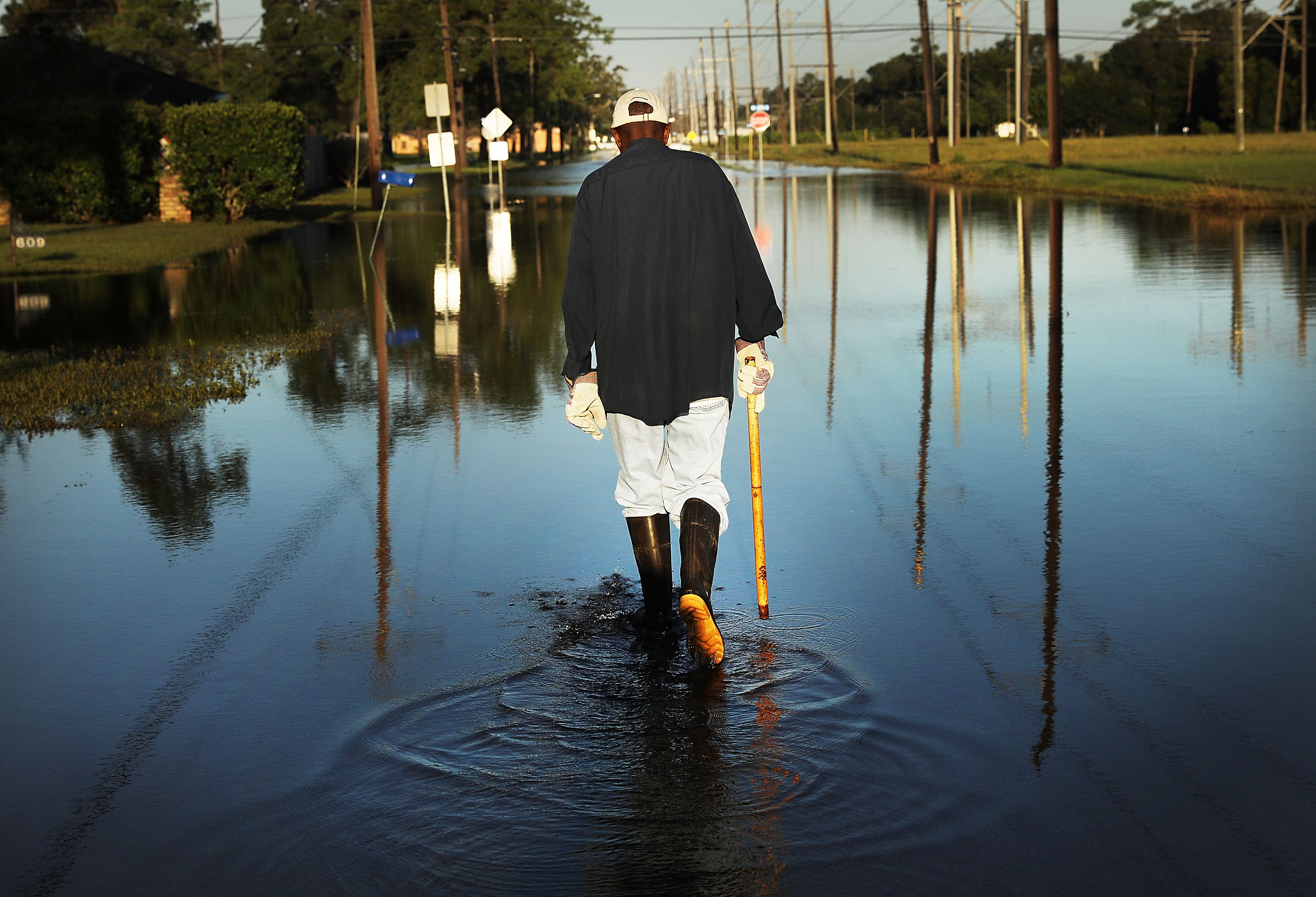Despite a year of dire climate impacts across the United States, President Donald Trump once again conflated weather with climate change in a holiday weekend tweet, touting a debunked argument rebutting global warming by citing cold weather.
In an early morning tweet on Sunday, the president referenced a major cold front playing out across parts of the country, implying the frosty weather offered a rebuttal to the phenomenon of climate change — an incorrect claim he has repeated several times in the past whenever there has been a snow storm.
“Be careful and try staying in your house. Large parts of the Country are suffering from tremendous amounts of snow and near record setting cold,” wrote Trump. “Amazing how big this system is. Wouldn’t be bad to have a little of that good old fashioned Global Warming right now!”
Be careful and try staying in your house. Large parts of the Country are suffering from tremendous amounts of snow and near record setting cold. Amazing how big this system is. Wouldn’t be bad to have a little of that good old fashioned Global Warming right now!
— Donald J. Trump (@realDonaldTrump) January 20, 2019
It is true that large swathes of the country are enduring bone-chilling temperatures right now. More than 100 million people are under winter weather alerts nationally. Those include warnings associated with Winter Storm Indra, which is bringing blankets of snow and ice as it moves from the Mountain West over across the Midwest and over to the east.
A polar vortex from the Arctic has also sent temperatures tumbling well below freezing in the Northeast, submerging the nation’s capital and surrounding areas into temperatures as low as -10 degrees Fahrenheit.
But climate refers to the extended behavior of the atmosphere, while weather itself is really just what happens in the atmosphere at any one moment in time. And weather experts say that the current bitterly cold scenario could actually be connected to warming in the Arctic.
Polar vortexes are increasingly becoming a seasonal tradition in the United States, as the circular wind bands break down and send cold air tumbling south. Some climate researchers have linked that uptick to rapidly-melting sea ice in the Arctic. When the ice absorbs extra heat from the sun, as is happening with greater frequency, hot spots and changes in the jet stream react with the bands of wind that typically keep cold weather locked in place up north. That helps the polar vortex to break — causing brutally cold air to descend on many parts of the world.
The president has long denied the science on climate change. And this isn’t the first time that he has incorrectly conflated weather and climate change. Last winter during another cold spell, Trump similarly tweeted that “we could use a little bit of that good old Global Warming.”
Climate science is accepted as fact by virtually all experts, but Trump has said he will withdraw the country from the Paris climate agreement and has overseen the mass-rollback of environmental safeguards meant to mitigate global warming. And while the president continues to confuse weather and climate change, the government’s own science has shown that climate change is in fact impacting the weather, in addition to sparking more extreme weather events.
Released last November, the Congressionally-mandated National Climate Assessment (NCA) found that climate impacts are already playing out across the country. Authored by hundreds of scientists, the report found an alarming uptick in natural disasters, including wildfires in the West and worsening hurricanes in the Southeast, among others, while the Northeast is seeing winters that come later and end earlier, as is the case this year.
Trump, however, has also downplayed the link between climate change and natural disasters, including taking aim multiple times at California’s struggles with worsening wildfires. Despite warnings from scientists that hotter weather is helping the naturally-occurring wildfires to worsen, Trump has instead pointed to forest management, arguing that West Coast officials are alone to blame for the problem.
Worsening fires and more prevalent cold snaps aren’t the only looming problem for the country. The NCA also found that more rain is becoming a trend on the East Coast, exacerbating floods and wreaking havoc on infrastructure. Those findings came in lock-step with grim weather milestones — 2018 was the wettest year on record for a number of cities, including Baltimore and Philadelphia, along with Wilmington, North Carolina, which saw severe impacts from Hurricane Florence.
The mid-Atlantic and parts of the Southeast were the worst-hit by rain last year, and, so far, that trend is continuing into this year in some areas.
In Washington, D.C., where the president spends much of his time, more than 61 inches of rain fell last year, shattering the city’s record for wettest in history. And while it’s hard to connect any one weather event to climate change, the NCA found that the capital city is likely to see shorter winters, hotter summers, and increasing amounts of rain on a yearly basis.
Like much of the country, D.C. is beginning this week experiencing the fallout from the polar vortex. But according to the forecast, that won’t last long — by Wednesday, the city is projected to see more rain.


